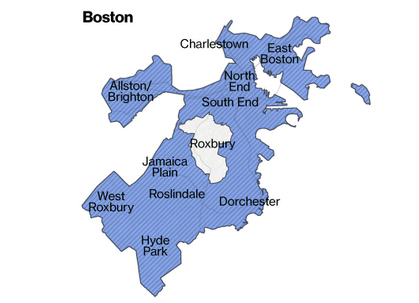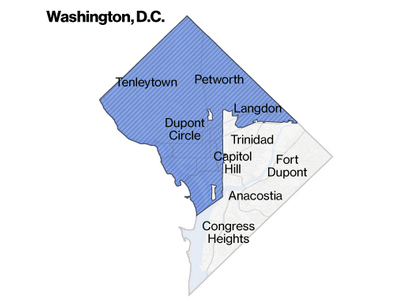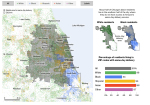In 6 Cities, Amazon Same-Day Delivery Available In More White ZIP Codes Than Black Ones Image courtesy of Zach Egolf
Effective same-day delivery is kind of the holy grail of online retail right now: being able to get your hands on that thing you need right now when you need it is the one advantage brick-and-mortar stores still have, and it’s the one Amazon in particular wants to chip away at. The list of cities where Amazon promises Prime subscribers access to same-day delivery keeps getting longer, but there’s a snag: not all addresses within a city are considered equal, and the pattern to the areas without access looks distressingly familiar.
It makes sense that not every single ZIP code out there can be equally reached by same-day delivery services. Some cities are large and sprawling and complicated, sure, and even in the more compact ones there might be some roads that are just tricky to take a truck down. Warehouses might be juuuuuuust out of range for the far-flung corners of a metropolis. Exceptions will always happen.
But reporters at Bloomberg went looking at those exceptions, and what they found in many of the nation’s biggest cities isn’t just haphazard: it’s a pattern with a clear and troubling correlation to hand.
For example, those exceptions makes a lot less sense when the no-go zone is one tiny little island in the middle of a geographically compact city — as in the Roxbury area of Boston, perhaps Bloomberg’s most immediately egregious example:

Bloomberg’s map of Amazon Prime same-day delivery in Boston
Likewise, the map of our nation’s capital — designed from the start as only ten miles on a side, and since 1846 even smaller — has a rather… abrupt demarcation in it:

Bloomberg’s map of Amazon Prime same-day delivery in DC
And what do Roxbury and Southeast DC have in common? They’re the areas of their home cities with the highest concentration of black residents.
What has happened in both of those cities, Bloomberg found — as well as in Chicago, Dallas, Atlanta, and New York — is that those little “pockets” (or glaring lines) where same-day delivery is unavailable correlate very neatly to the pockets (or glaring lines) of the neighborhoods’ racial make-up, as reported on the census.
Amazon’s certainly not doing it on purpose; no one is sitting around their office in Seattle, twirling a handlebar mustache while brandishing a cigar and exclaiming, “I know: Racism!”
Instead, it’s a problem we’ve seen before: when an algorithm or a computer or a human wielding those tools uses proxy data, like ZIP code and income correlations, what it often ends up with is a big fat pile of unintentional, but still present, racial bias.
Amazon tells Bloomberg that its plan in each city it goes to is to “start out small,” where there’s already a high concentration of Prime members, and then “end up getting big” as they expand the program, which makes a perfect amount of sense from Amazon’s point of view. But there are a lot of cities — including these six — where “highest number of existing subscribers” is probably going to correlate to “wealthiest areas,” which also tends to correlate to “whitest areas.”
In other words: customers who, behind a screen, are all anonymous and who live mere yards from each other are still treated differently under the data.
A Washington, D.C. area Prime customer who lives in one of the neighborhoods without same-day delivery tells Bloomberg, “I still get two-day shipping, but none of the superfast, convenient delivery services come here. If you bring that service to the city, you should offer it to the whole city.”

Bloomberg’s interactive map of race vs. Prime same-day access in Chicago
Or, as the D.C. customer put it to Bloomberg: “They [Amazon] are offering different services to other people who don’t look like you but live in the same city,” and so long as the effect continues to exist, the cause doesn’t really matter.
Amazon Doesn’t Consider the Race of Its Customers. Should It? [Bloomberg]
Want more consumer news? Visit our parent organization, Consumer Reports, for the latest on scams, recalls, and other consumer issues.

